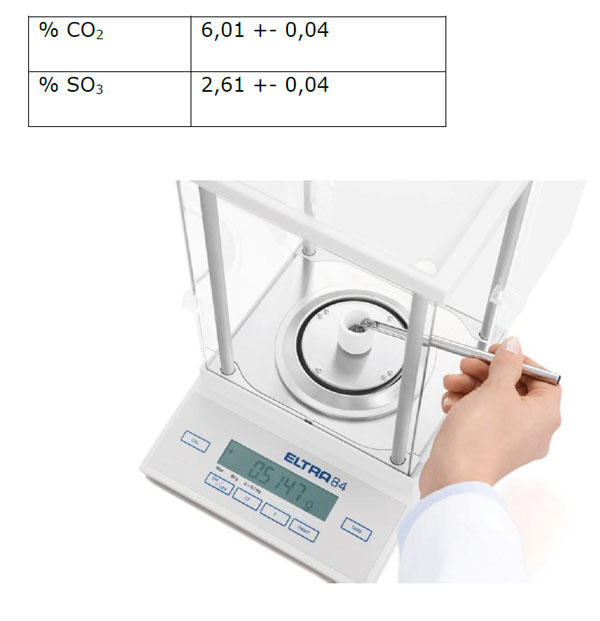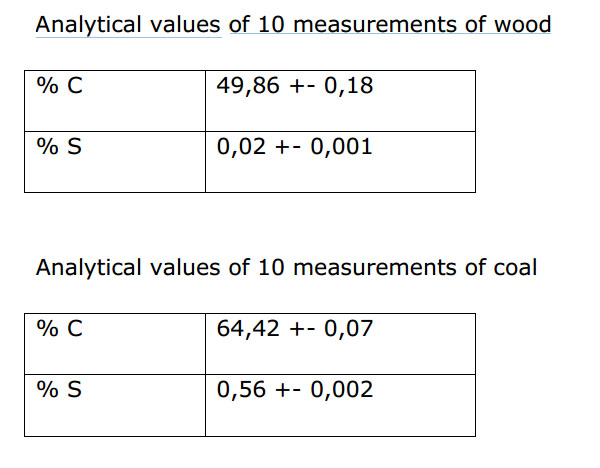Part of the production process of high quality cement is quality control of the raw materials as well as the intermediate and finished products. At each production stage samples are taken, processed and analyzed to determine the chemical composition of the material.
For the fast, accurate and reliable determination of carbon and sulfur elemental analyzers using combustion technology are a useful addition to XRF analyzers. Apart from size reduction no further sample preparation is needed for analyzing a sample with an elemental analyzer. In contrast to XRF analysis the element content of carbon and sulfur can be measured from the ppm range up to 100 % and the results are usually obtained within 60 to 120 seconds.
Elemental analysis by combustion
Depending on the sample matrix (f. e. cement or fuel) different elemental analyzers are used for the determination of the carbon and sulfur content. Elemental analyzers in general combust the sample in an oxygen stream and measure the released gases (CO2 and SO2) with infrared cells. Inorganic samples with a low carbon and sulfur content (like cement) are usually combusted in an induction furnace at temperatures up to 2200 ° C. First, the particle size of samples like cement clinker, gypsum, raw mix or lime has to be reduced down to 200 µm or less by using a laboratory mill. Afterwards a small, representative sample amount of about 200 mg is taken and weighed into a ceramic crucible. In a next step some accelerators (1g of tungsten and iron) are added to the crucible. The complete analysis of the carbon and sulfur content of the sample only takes about 60 seconds.
Due to their different combustion behavior, organic samples (f. e. fuels) cannot be processed in an induction furnace. Fuels which are typically used in the cement industry (coal, coke, secondary fuels) have a much higher carbon content than cement and can only be measured with a resistance furnace at temperatures about 1300 °C. After reducing the particle size of the fuel sample down to approx. 200 µm, which can be easily done in an ultra centrifugal mill, a representative sample of up to 500 mg can be analyzed directly without adding accelerators. The carbon and sulfur content is obtained within 120 seconds. Basically, the lab staff has to decide whether an elemental analyzer with induction or resistance furnace is best suited for their requirements. ELTRA’s CS-2000 (fig. 1) is the only analyzer in the market which combines these two combustion techniques (Eltra Dual Furnace Technology) and is therefore ideally suited for a variety of analytical applications in a cement plant.

Application example cement
Due to the large worldwide production amount of cement (hundreds of millions of tons) a reliable determination of carbon and sulfur for quality control is needed. If the sulfur content, for example, is too high the cement could be destroyed because of the chemical reaction of sulfuric acid. In the cement industry the carbon content usually is certified as CO2 content and the sulfur content is given as SO3 content. The software of the CS-2000 provides results in different notifications (S, SO3, SO4, C, CO2).
In the induction furnace of the CS-2000 about 10 samples of cement (sample weight about 200 mg) were analyzed. For sample preparation the size was reduced to approx. 200 µm and before every measurement about 1 g of tungsten and iron was added. Every measurement took about 60 seconds and the low standard deviation of the carbon and sulfur content shows the performance of the ELTRA CS-2000 induction furnace:
Analytical values of 10 measurements of cement

Application example fuels
Different fuels are used in the production process of cement. The released sulfur content of those fuels is a very important parameter for processing the combustion gas desulfurization. Coal on the one hand shows a rather high sulfur content up to 5 %. On the other hand secondary fuels (like wood or biomass) have a low sulfur content of about 0.02 % only. The combustion furnace of the CS-2000 is able to analyze such samples with greatly varying sulfur content precisely and reliably. With the resistance furnace of the CS-2000 wood samples and coal samples were analyzed 10 times, each with a nominal weight of approx. 200 mg. The analysis time was about 120 seconds and for sample preparation the size was reduced down to 200 µm.
Conclusion
Ensuring fast, precise and reliable analysis of carbon and sulfur in cement, fuels and other samples elemental analyzers based on combustion technology are a useful addition to XRF analysis for the quality control of cement and related products. With its combination of resistance and induction furnace ELTRA’s CS-2000 is unique in the market, covering a wide range of applications for C and S determination in organic and inorganic samples.
Author
Dr. Andre Klostermeier
Eltra GmbH
Retsch-Allee 1-5, 42781 Haan, Germany
Telefon: +49 (0) 21 04/23 33400
E-Mail: a.klostermeier@eltra.org



